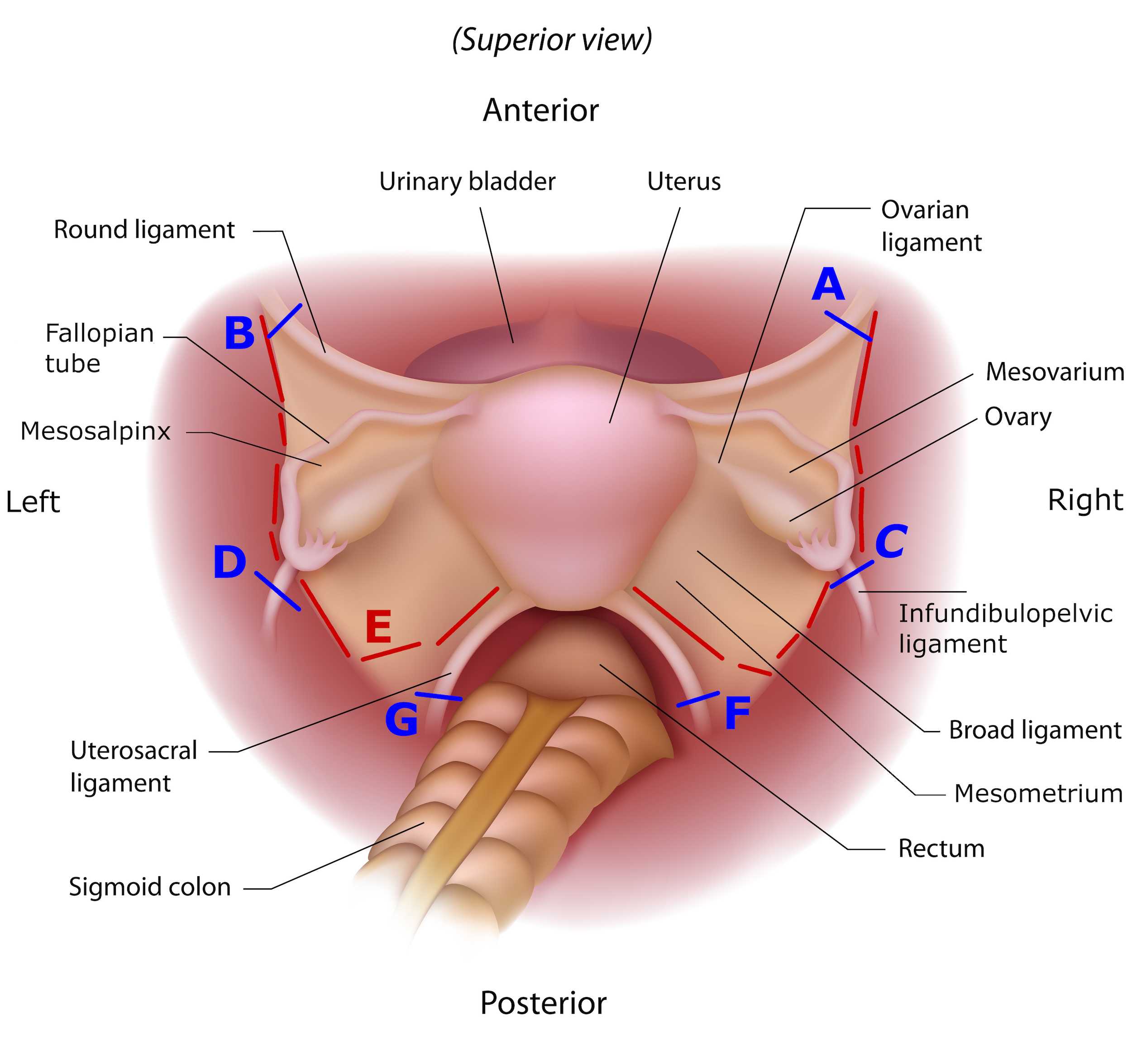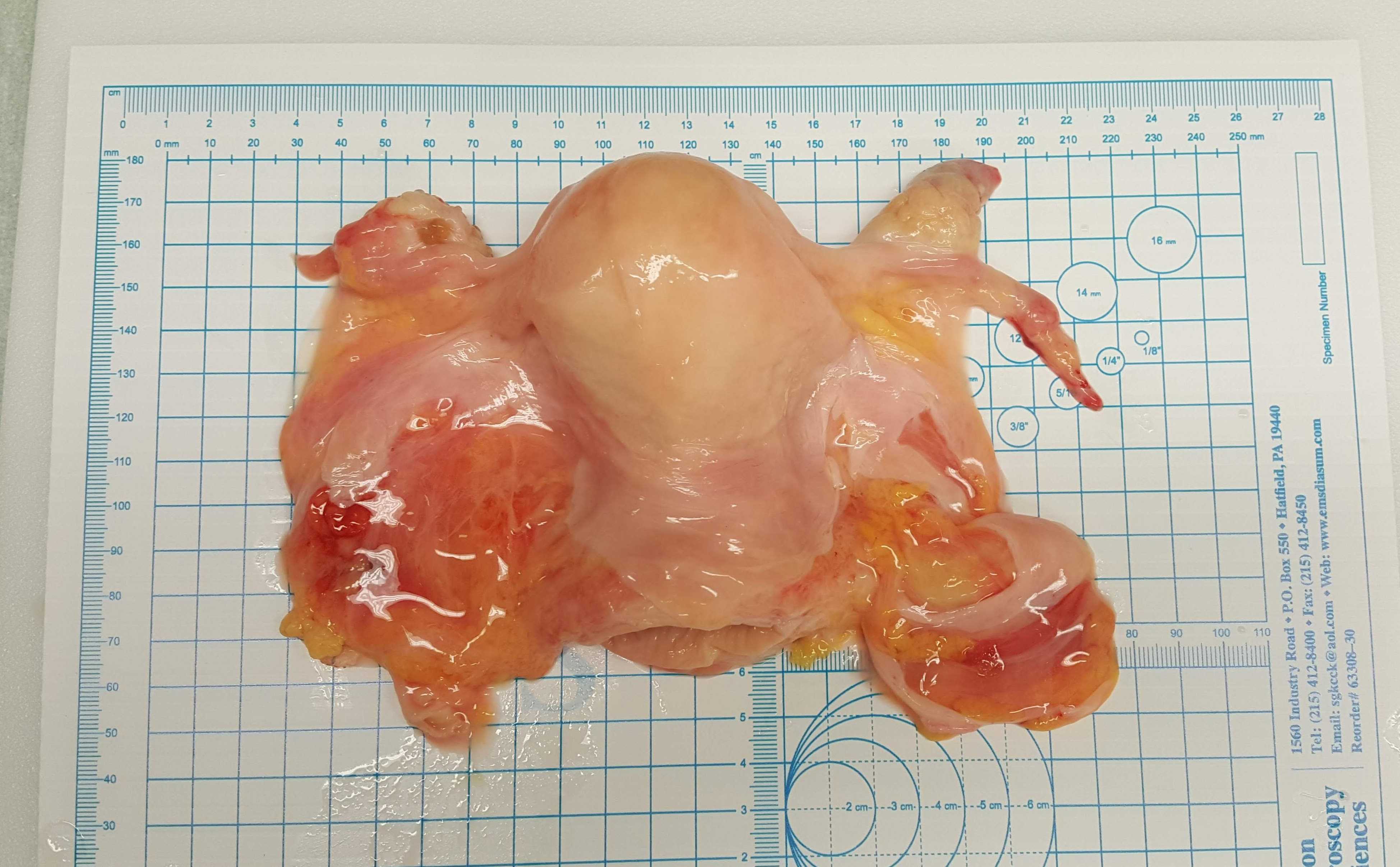Removal of the Female Reproductive System En Bloc
Stephen Fisher, Marielena Grijalva, Rong Guo, Sarah A Johnston, Hieu Nguyen, John Renz, Jean G Rosario, Steven Rudich, Brian Gregory, Junhyong Kim, Kate O'Neill
Abstract
This protocol describes removal of the ovaries, Fallopian tubes, and uterus as a whole from the pelvis.
Before start
Steps
Identify right round ligament and suture ligate laterally with 2-0 vicryl (Figure 1a).

Divide right round ligament and continue dividing broad ligament cephalad toward the vesicouterine peritoneal reflection using Metzebaum scissors.
Similarly identify, ligate, and divide left round ligament and incise broad ligament cephalad toward the cervix to meet the right side (Figure 1b).
Using two fingers, push bladder cephalad to separate it from the uterus and cervix.
Note : Prior cesarean deliveries can make this difficult.
Identify, clamp, and cut right and left ovarian arteries and veins (also called the infundibulopelvic ligaments) using curved clamps and Mayo scissors (Figure 1c, 1d).
Divide the broad ligament laterally, keeping ovaries and Fallopian tubes medial to and attached to the uterus using scalpel or Mayo scissors (Figure 1e).
Further mobilize bladder off the cervix and proximal vagina with blunt dissection.
Clamp and cut the uterine artery and vein and surrounding parametrium bilaterally.
Clamp and cut the uterosacral ligaments (Figure 1f, 1g).
Palpate the bottom of the cervix between the bladder and rectum using a thumb and forefinger.
Place two curved Heaney clamps beneath the cervix across the vagina.
Use a scalpel or Statinsky scissors to transect vagina and remove FRS en bloc from the pelvis.
Use Allis clamps to grasp the anterior and posterior walls of the vagina.
Close vagina using a running 0-vicryl suture.
Obtain pictures of front and back of preservation solution to obtain the lot number and expiration date.
Measure organs and place in a bag on ice and prepare for transport, keeping individual organs on ice throughout the following protocols, when not actively working with them (Figure 2).


